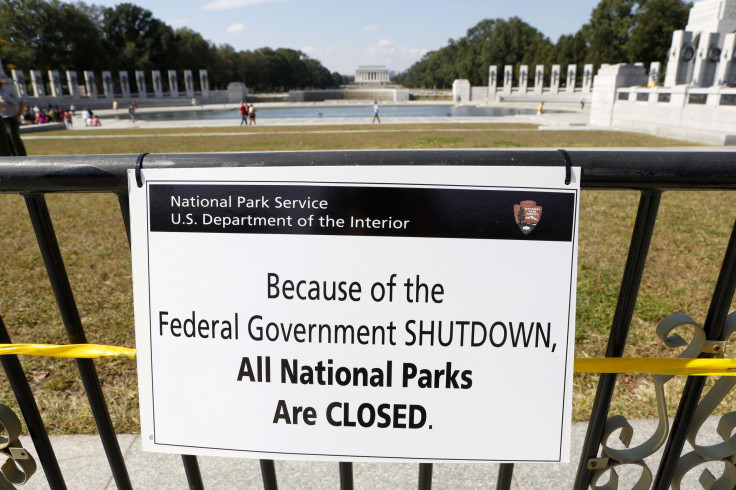US Government Shutdown 2013: Could It Hurt Q4 GDP? Three Things To Consider

The shutdown of the U.S. federal government, which has resulted in 800,000 federal employees being forced to stay at home without pay, dragged into a second day on Wednesday with no sign of a quick fix.
While a brief shutdown of one or two weeks would have only a modest impact on the U.S. economy, that multiplies as the shutdown continues.
Much of what we know about the economic impact of government shutdowns comes from the last federal shutdown that began in late 1995. Similar to now, that shutdown resulted from a budget impasse involving a Democratic president (Bill Clinton) and a Republican-controlled Congress (in 1995, Republicans also controlled the Senate). Roughly 36 percent of the 2.2 million federal civilian nonpostal workers were furloughed, and the 21-day shutdown caused federal spending to contract by 14.2 percent annualized in the fourth quarter, subtracting around 1 percent from overall gross domestic product growth.
The effect of a government shutdown depends mainly on three variables:
How long it lasts. Compensation of federal employees is counted as federal consumption in the national accounts, so each day that federal employees don't go to work and aren't paid results in a reduction in federal consumption, according to Paul Edelstein, director of financial economics at IHS.
This time around, Capital Economics’ Paul Ashworth estimates that the furloughing of 800,000 federal employees will reduce spending by roughly $155 million per day, which on an annualized basis is roughly equivalent to a mere 0.3 percent of GDP. “If the current shutdown drags on, however, then once the debt ceiling limit begins to bite in the second half of this month, the economic and market impact would become much greater,” Ashworth said.
According to Goldman Sachs' Alec Phillips, there are a few natural deadlines: The end of this week could serve as a deadline, as members of Congress must decide whether to keep Congress in session over the coming weekend to hammer out a deal. Another obvious deadline would be the end of the following week, Oct. 11, when Congress has a scheduled one-week recess for Columbus Day. The next deadline would be Oct. 17, when the Treasury expects to exhaust its borrowing capacity under the current debt limit.
Whether federal pay is retroactively made up. If Congress opted to retroactively make up lost pay, as it did in 1995, it would mitigate the effect on the federal contribution to GDP, Phillips said. The difference, however, is that the 1995 shutdown came right at the end of the quarter, whereas the current one is starting on the first day of a new quarter. The spending habits of government employees probably would not change if the shutdown was short-lived, particularly if they believed that they would receive back wages. When the shutdown ends and the federal employees receive their back pay, some of the activity and spending that doesn't take place at the start of the fourth quarter will still take place before the end of the year. That said, any uncertainty about compensation could increase the impact on consumer spending.
When in the quarter the shutdown occurs. Apart from compensation, which is a straightforward cancelation of pay, most of the rest of the effect is a question of how much spending is delayed from this quarter into next quarter, Phillips noted. This would mainly be an issue for services procurement, which is worth roughly the same amount as civilian employee compensation. Phillips assumes that in a short shutdown, these areas would essentially be unaffected, but that in a longer shutdown a greater share of services procurement, for example, would be pushed into the following quarter.
© Copyright IBTimes 2024. All rights reserved.












